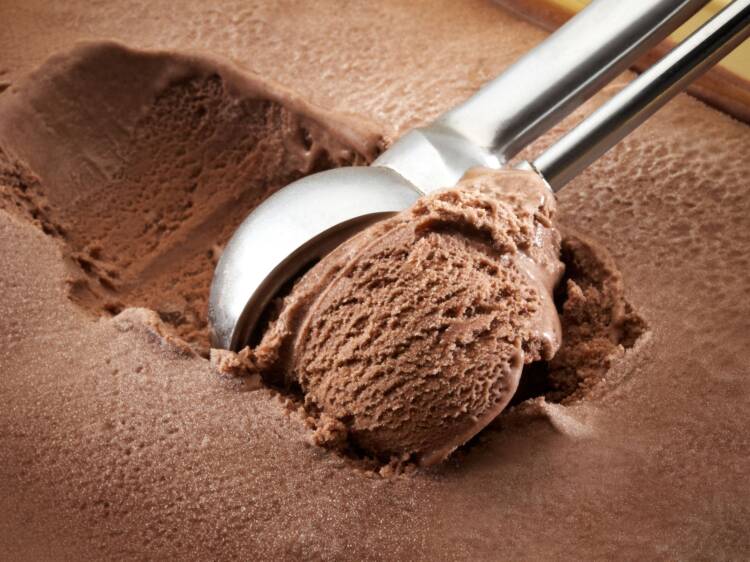The Architecture of Texture in Frozen Desserts
by Mark Robert, Technical Director, Dairy, North America
Picture this: it’s a warm summer evening, and you’ve just walked out of the local ice cream parlor with a double scoop of your favorite flavor. You’re just about to take that first, oh-so-satisfying lick… when a friendly neighborhood food scientist walks up and asks if you’ve ever thought about why ice cream is so rich and creamy.
Unless you actually know a food scientist, this is unlikely to happen. So, let’s take this opportunity to explore the key drivers of texture in frozen desserts and delve into the vital role of stabilizers and emulsifiers in achieving the desired mouthfeel. Join us as we uncover the secrets to crafting unforgettable frozen treats.
Understanding the Components of Texture
When it comes to texture and mouthfeel, we divide it into three essential aspects: structural texture design, appearance design, and oral structure design. Each plays a crucial role in creating a delightful sensory experience for ice cream lovers. Let's examine how these elements come together in the cone or bowl or on the stick.
Ice cream, the undisputed champion of frozen desserts, is essentially a "frozen foam." Partially coalesced fat entraps air molecules, creating a foam-like structure. To ensure the desired texture, it's crucial to understand the function of stabilizers and emulsifiers in ice cream formulation.
Stabilizers serve multiple purposes in ice cream production. Their key functions include:
- Increasing mix viscosity
- Preventing serum separation
- Reducing ice crystal growth through temperature abuse
- Controlling water migration to prevent carton shrinkage
- Slowing the melting rate
- Providing a smooth mouthfeel by controlling ice crystal size
Commonly used ice cream stabilizers include guar gum, locust bean gum, tara gum, tamarind seed gum, cellulose gum, and microcrystalline cellulose.
Emulsifiers play a vital role in ice cream formulation. Their primary purposes include:
- Promoting fat nucleation during aging
- Improving the whippability of the mix by functioning at the air-fat interface
- Providing a dry and stiff frozen product
- Stabilizing the fat foam structure to prevent carton shrinkage
- Enhancing the smooth and creamy texture during consumption by controlling fat agglomeration
Popular ice cream emulsifiers include mono and diglycerides, polysorbate 80, lecithin (derived from sunflower or soy), and egg yolks.
Measuring the Impact of Components on Texture
To understand how butterfat, stabilizers, and emulsifiers affect texture in ice cream, Tate & Lyle conducted comprehensive trials and panels to measure key textural attributes. The results shed light on the influence of these components on ice cream texture.
For example, Butterfat content significantly impacts every key aspect of texture in ice cream. Attributes such as coldness, smoothness, creaminess, and mouthcoating are most affected by butterfat content.
Comparative analysis between ice cream formulations with and without stabilizers and emulsifiers revealed interesting findings as well. In 10% fat formulas, removing stabilizers and emulsifiers significantly impacted smoothness, creaminess, and mouthcoating of the frozen dessert. In 5% fat formulas, the attributes most affected were smoothness, fluffiness, melting rate, and chewiness.
Comparing the function of stabilizers versus emulsifiers, stabilizers had a significantly greater impact. Samples without stabilizers were significantly colder, less smooth, less creamy, and exhibited lower mouthcoating.
How to Build Texture and Deliver an Enjoyable Eating Experience
Fat content, stabilizers, and emulsifiers are vital components when crafting the perfect texture in frozen desserts. Stabilizers control the water phase, contributing to attributes such as warmth, smoothness, creaminess, and mouthcoating. Emulsifiers interact with the fat component, influencing aeration and attributes like fluffiness, melting rate, and mouthcoating. By optimizing the combinations of stabilizers and emulsifiers, product developers can unlock a wide range of textures in their frozen dessert creations.
Of course, the end-user, your lucky consumer, doesn’t have to worry about any of this — they’ll just enjoy a crave-crushing, luxurious serving of ice cream. Provided they’re not out with a passionate dairy food scientist, of course. Whether you are working on reduced fat, plant-based, variegates, or upscale textures like mousse, Tate & Lyle has plenty of starter recipes and the know-how to help you construct a solid finished product.
See some of our latest creations in the Prototype Pantry

